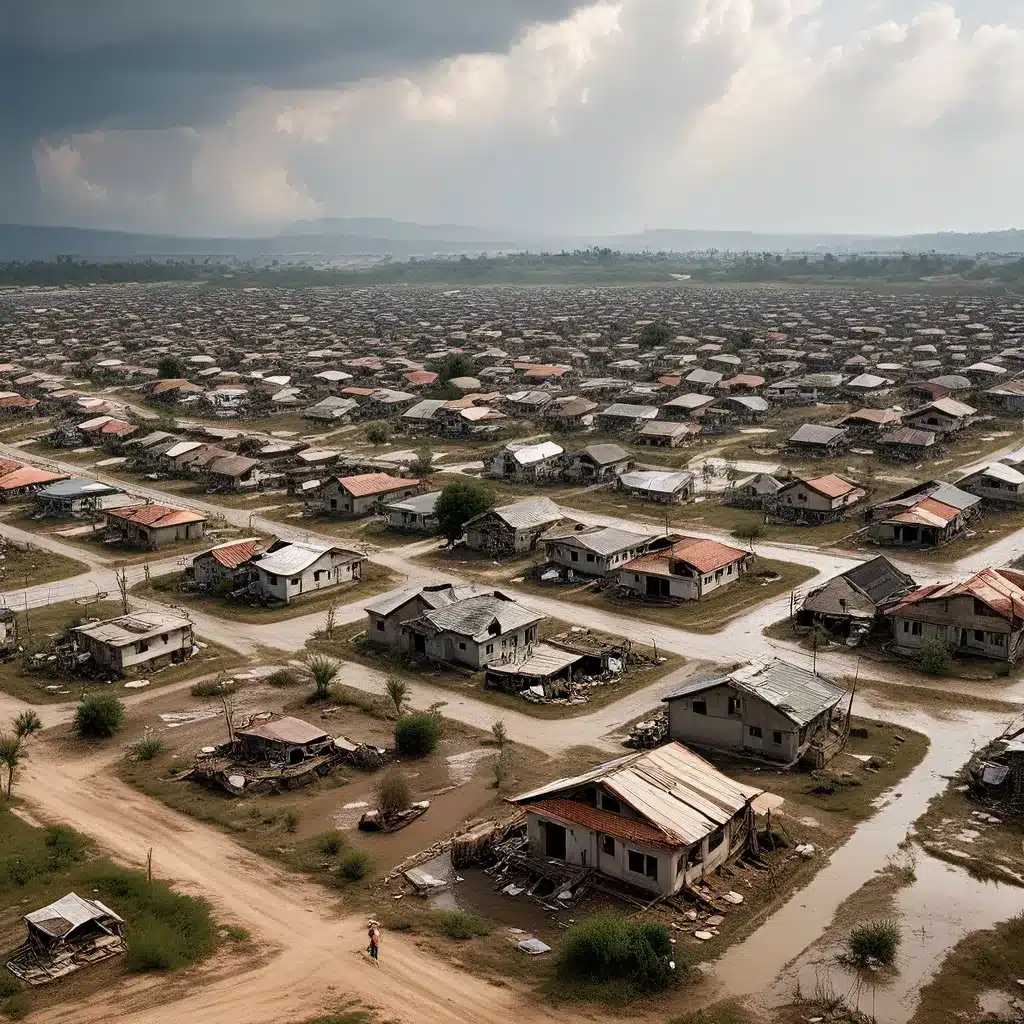
The Evolving Landscape of Sensor Networks
Sensor networks have emerged as a transformative technology, revolutionizing the way we collect, analyze, and respond to critical data in diverse applications. From IoT (Internet of Things) systems monitoring environmental conditions to smart city infrastructure tracking traffic patterns, these interconnected networks of sensors are redefining how we understand and interact with our surroundings.
One particularly crucial application of sensor networks is in the realm of disaster resilience. As the frequency and intensity of natural disasters continue to escalate globally, the need for robust and reliable early warning systems has become paramount. Sensor networks can play a pivotal role in enhancing disaster preparedness and emergency response, leveraging their ability to gather real-time data and facilitate rapid decision-making.
Enhancing Early Warning Capabilities
At the core of disaster resilience is the ability to detect and anticipate impending threats early, allowing for timely evacuation, resource allocation, and mitigation efforts. Sensor networks excel in this domain, offering a multitude of sensors that can monitor a wide range of environmental parameters, from seismic activity and weather patterns to water levels and infrastructure integrity.
By strategically deploying these sensors in high-risk areas, organizations can establish comprehensive early warning systems that can detect the onset of a disaster, such as an earthquake, hurricane, or flood, with a high degree of accuracy. Researchers have developed advanced algorithms that can analyze sensor data in real-time, identifying patterns and anomalies that indicate an impending crisis.
Moreover, sensor networks can be integrated with communication systems, alerting authorities and the public through various channels, including mobile apps, emergency broadcast systems, and social media platforms. This seamless integration ensures that critical information reaches the right stakeholders, enabling swift and coordinated response efforts.
Enhancing Emergency Response Capabilities
In the aftermath of a disaster, sensor networks can play a crucial role in guiding emergency response and recovery efforts. These networks can provide real-time situational awareness, mapping the extent of the damage, identifying areas of critical infrastructure failure, and tracking the movement of first responders and evacuees.
Sensor-equipped drones and mobile robots can be deployed to assess hard-to-reach areas, gathering vital information that can inform the allocation of resources and the prioritization of rescue and relief operations. Additionally, sensors embedded within buildings, bridges, and other structures can detect structural instability, alerting emergency teams to potential hazards and guiding the deployment of search and rescue personnel.
The data collected by sensor networks can also be integrated with Geographic Information Systems (GIS) and data visualization tools, creating interactive dashboards that provide a comprehensive understanding of the unfolding situation. This enhanced situational awareness empowers decision-makers to make informed choices, optimizing the deployment of resources and ensuring the safety of both responders and affected communities.
Addressing Security and Energy Challenges
As sensor networks become increasingly integral to disaster resilience, addressing security and energy management challenges is crucial to ensure their reliable and sustained operation.
Cybersecurity is a paramount concern, as sensor networks can be vulnerable to cyber attacks that disrupt data transmission, compromise sensor integrity, or even enable malicious actors to gain control of critical infrastructure. Robust encryption protocols, secure authentication mechanisms, and intrusion detection systems are essential to safeguard these networks and protect the sensitive information they collect.
Moreover, the energy consumption of sensor nodes is a crucial factor, as many of these devices are deployed in remote or hard-to-access areas, where frequent battery replacement or recharging can be logistically challenging. Energy-efficient sensor designs, power-saving protocols, and the integration of renewable energy sources can help extend the operational lifespan of these networks, ensuring their continuous and reliable performance during emergencies.
The Future of Sensor Networks in Disaster Resilience
As the frequency and intensity of natural disasters continue to escalate, the role of sensor networks in enhancing disaster resilience will only grow in importance. Emerging technologies, such as 5G connectivity, edge computing, and machine learning, are poised to further optimize the capabilities of these networks, enabling faster data processing, more accurate predictions, and more coordinated response efforts.
Furthermore, the integration of sensor networks with Artificial Intelligence (AI) and Big Data analytics will unlock new avenues for predictive modeling and decision support systems. By leveraging the vast amounts of data collected by sensor networks, these advanced analytical tools can help identify patterns, trends, and anomalies that could signify the onset of a disaster, allowing for even more precise and timely early warning capabilities.
As sensor networks continue to evolve, they will undoubtedly play a pivotal role in shaping the future of disaster resilience, empowering communities to anticipate, prepare for, and respond to the challenges posed by natural and man-made crises. By harnessing the power of these interconnected systems, we can build a more resilient and sustainable future, better equipped to withstand and recover from the devastating impacts of disasters.